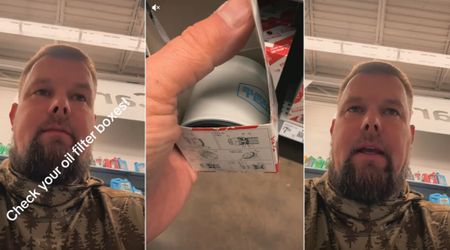This New Cybersecurity Label Tells You if Your Gadget Can Be Hacked Easily

In a world where everything from baby monitors to household appliances is becoming 'smart' and interconnected, the need for robust cybersecurity measures is more critical than ever. Unfortunately, many Internet of Things (IoT) devices lack even basic protections against hacking, leaving users vulnerable to cyberattacks. The U.S. government has taken a significant step towards improving IoT security by introducing the U.S. Cyber Trust Mark, a label that will indicate whether a device is equipped with proper cybersecurity measures, per Vox. How will this initiative impact the safety of our connected gadgets?

The IoT: A growing cybersecurity threat
Over the years, the IoT has increasingly become a target for cyberattacks due to the proliferation of vulnerable devices and the lack of adequate security measures. Cybersecurity experts have raised concerns about this growing threat and the numbers back up their worries. According to Check Point Software, a cybersecurity provider and researcher, the number of cyberattacks through IoT devices has seen a significant surge in recent years.
The birth of the Cyber Trust Mark
To address the cybersecurity challenges posed by IoT devices, President Biden issued an executive order in May 2021 aimed at improving the nation's cybersecurity. Buried within this order was a call for the development of a consumer labeling program for IoT devices. The program would help users identify which products have proper cybersecurity protections.

The U.S. Cyber Trust Mark: What to expect
The Cyber Trust Mark, designed as a shield with a microchip, is set to be launched in 2024. This label will indicate that a device meets specific cybersecurity criteria. While some details of the program are still being finalized, certain features can be expected such as secured data transmissions, access controls, software updates, user-controlled passwords, and data deletion.
A voluntary program with industry support
Although the Cyber Trust Mark is a voluntary program, several major companies have already pledged their support, including Amazon, Best Buy, LG, Samsung, Qualcomm, Logitech, and Google. The presence of this label on IoT devices could become a significant factor for consumers in their buying decisions. While some experts advocate for mandatory regulations for IoT products, the label is seen as a crucial first step in encouraging informed purchasing decisions.
Challenges and concerns
Despite its potential benefits, the Cyber Trust Mark faces certain challenges. One concern is that labeled devices might be sold at a premium due to increased cybersecurity costs, potentially leading consumers to choose cheaper, unlabeled alternatives. Additionally, the label won't apply to devices that pre-date the program, leaving many older devices in homes without this certification.

Promoting a safer IoT landscape
The introduction of the Cyber Trust Mark marks a pivotal moment in the ongoing battle to secure the IoT landscape. While it won't be an overnight solution, it could ignite healthy competition among manufacturers to prioritize cybersecurity and privacy for consumers. The label's success will depend on effective implementation, consumer adoption, and continued efforts to educate users about digital security.
A long road ahead
Although the Cyber Trust Mark will be launched next year, it is just the beginning of a longer journey toward achieving a safer IoT ecosystem. As cyber threats continue to evolve, the government, businesses, and consumers must remain vigilant in upholding cybersecurity standards and fostering a secure and trustworthy IoT environment.
























